This is an image of lightning.
Click on image for full size
Photograph provided courtesy of Steve Albers
Sound Waves vs. Light Waves
You see a flash of lightning across the night sky. Five seconds later,
your hear the rumble of thunder. If lightning and thunder come from the
same source, then why don't they occur at the same time?
Actually, they do occur at the same time. The time difference that
you sense is due to the way sound and light travel. Light travels
extremely fast (300,000,000 m/s). In fact, it is faster than anything
else. Sound travels at a measly 343 m/s through air. Therefore we can
see light in an instant, but it takes a while to hear thunder.
Sound has another disadvantage because it tends to bounce off molecules
in the air. This makes the sound travel in all different directions.
The further away the source of the sound is, the more the sound gets
distorted.
Therefore, when you hear rumbling thunder, the lightning bolt was far
away. When you hear a crack or boom of thunder, the lightning bolt is
close to you (<100 m).
You might also be interested in:

How did life evolve on Earth? The answer to this question can help us understand our past and prepare for our future. Although evolution provides credible and reliable answers, polls show that many people turn away from science, seeking other explanations with which they are more comfortable.
...more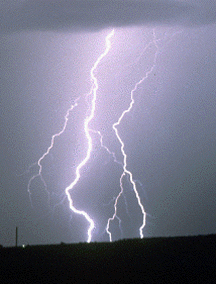
You see a flash of lightning across the night sky. Five seconds later, your hear the rumble of thunder. If lightning and thunder come from the same source, then why don't they occur at the same time?
...more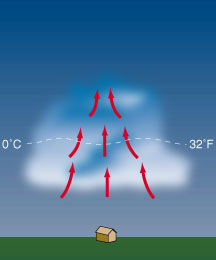
The sun heats the earth's surface during the day. The heat on the surface and warms the air around it. Since warm air is lighter than cool air, it starts to rise (known as an updraft). If the air is moist,
...more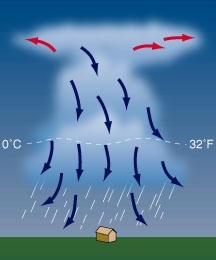
After about 30 minutes, the thunderstorm begins to dissipate. This occurs when the downdrafts in the cloud begins to dominate over the updraft. Since warm moist air can no longer rise, cloud droplets
...more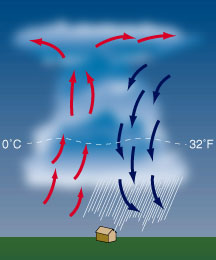
When the cumulus cloud becomes very large, the water in it become large and heavy. Raindrops start to fall through the cloud when the rising air can no longer hold them up. Meanwhile, cool dry air starts
...more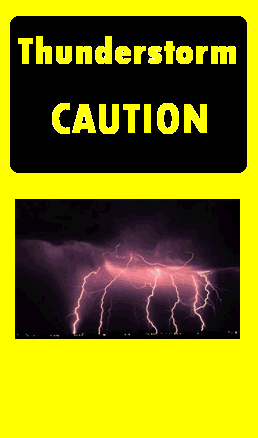
Thunderstorms can be really dangerous! Flash floods, lightning bolts, hail, tornadoes...all of these things can hurt you if you're not careful. So here's some safety tips. GO INSIDE! If you hear distant
...more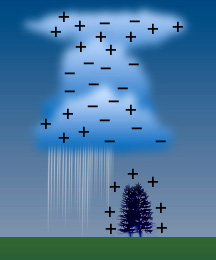
The sky is filled with electric charge. In a calm sky, the positive (+) and negative (-) charges are evenly spaced throughout the atmosphere. Therefore, a calm sky has a neutral charge. Inside a thunderstorm,
...more
Here's a safe and easy way to make lightning. You will need a cotton or wool blanket. This experiment works best on a dry, cool night. Turn out all the lights and let your eyes adjust to the darkness.
...more













